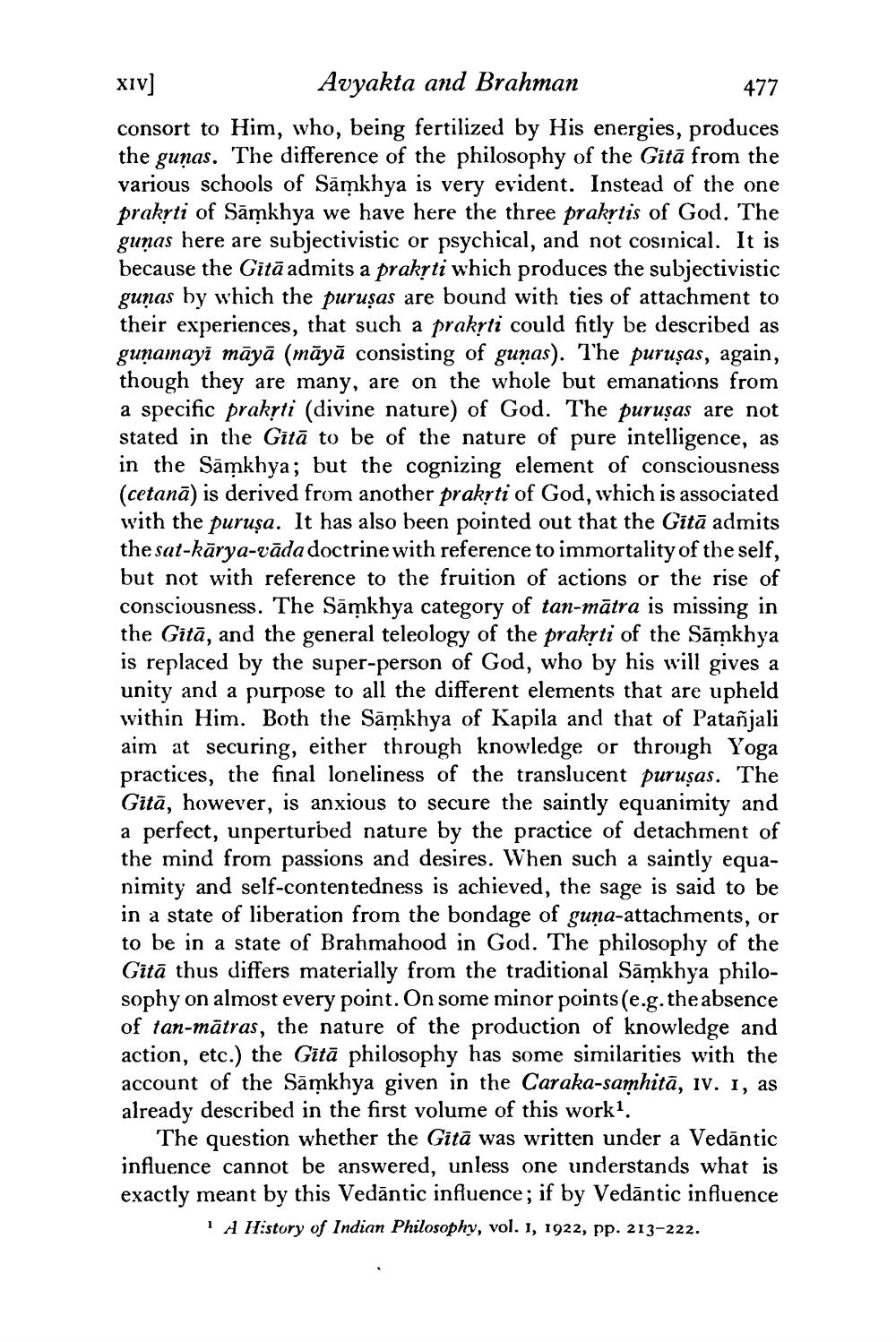________________
XIV) Avyakta and Brahman
477 consort to Him, who, being fertilized by His energies, produces the guņas. The difference of the philosophy of the Gītā from the various schools of Sāmkhya is very evident. Instead of the one prakrti of Sāmkhya we have here the three prakrtis of God. The gunas here are subjectivistic or psychical, and not cosinical. It is because the Gitā admits a prakrti which produces the subjectivistic gunas by which the puruṣas are bound with ties of attachment to their experiences, that such a prakrti could fitly be described as gunannayi māyā (māyā consisting of gunas). The puruṣas, again, though they are many, are on the whole but emanations from a specific prakrti (divine nature) of God. The puruṣas are not stated in the Gitā to be of the nature of pure intelligence, as in the Sāmkhya; but the cognizing element of consciousness (cetanā) is derived from another prakrti of God, which is associated with the purusa. It has also been pointed out that the Gitā admits the sat-kārya-vāda doctrine with reference to immortality of the self, but not with reference to the fruition of actions or the rise of consciousness. The Sāmkhya category of tan-mātra is missing in the Gītā, and the general teleology of the prakrti of the Sāmkhya is replaced by the super-person of God, who by his will gives a unity and a purpose to all the different elements that are upheld within Him. Both the Sāmkhya of Kapila and that of Patañjali aim at securing, either through knowledge or through Yoga practices, the final loneliness of the translucent puruṣas. The Gitā, however, is anxious to secure the saintly equanimity and a perfect, unperturbed nature by the practice of detachment of the mind from passions and desires. When such a saintly equanimity and self-contentedness is achieved, the sage is said to be in a state of liberation from the bondage of guņa-attachments, or to be in a state of Brahmahood in God. The philosophy of the Gitā thus differs materially from the traditional Samkhya philosophy on almost every point. On some minor points (e.g. the absence of tan-mātras, the nature of the production of knowledge and action, etc.) the Gītā philosophy has some similarities with the account of the Sāmkhya given in the Caraka-samhitā, iv. I, as already described in the first volume of this work1.
The question whether the Gitā was written under a Vedāntic influence cannot be answered, unless one understands what is exactly meant by this Vedāntic influence; if by Vedāntic influence
TA History of Indian Philosophy, vol. 1, 1922, pp. 213-222.




